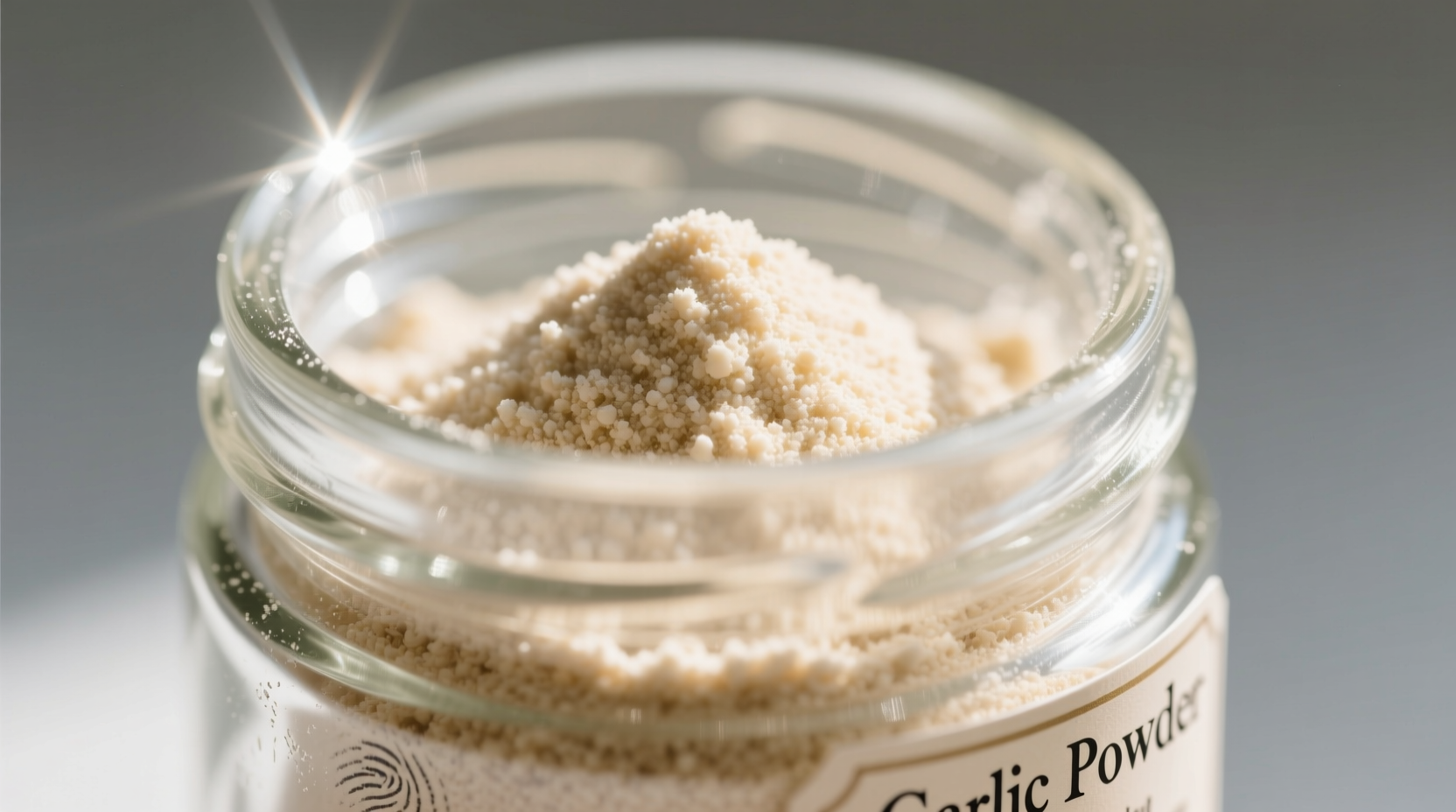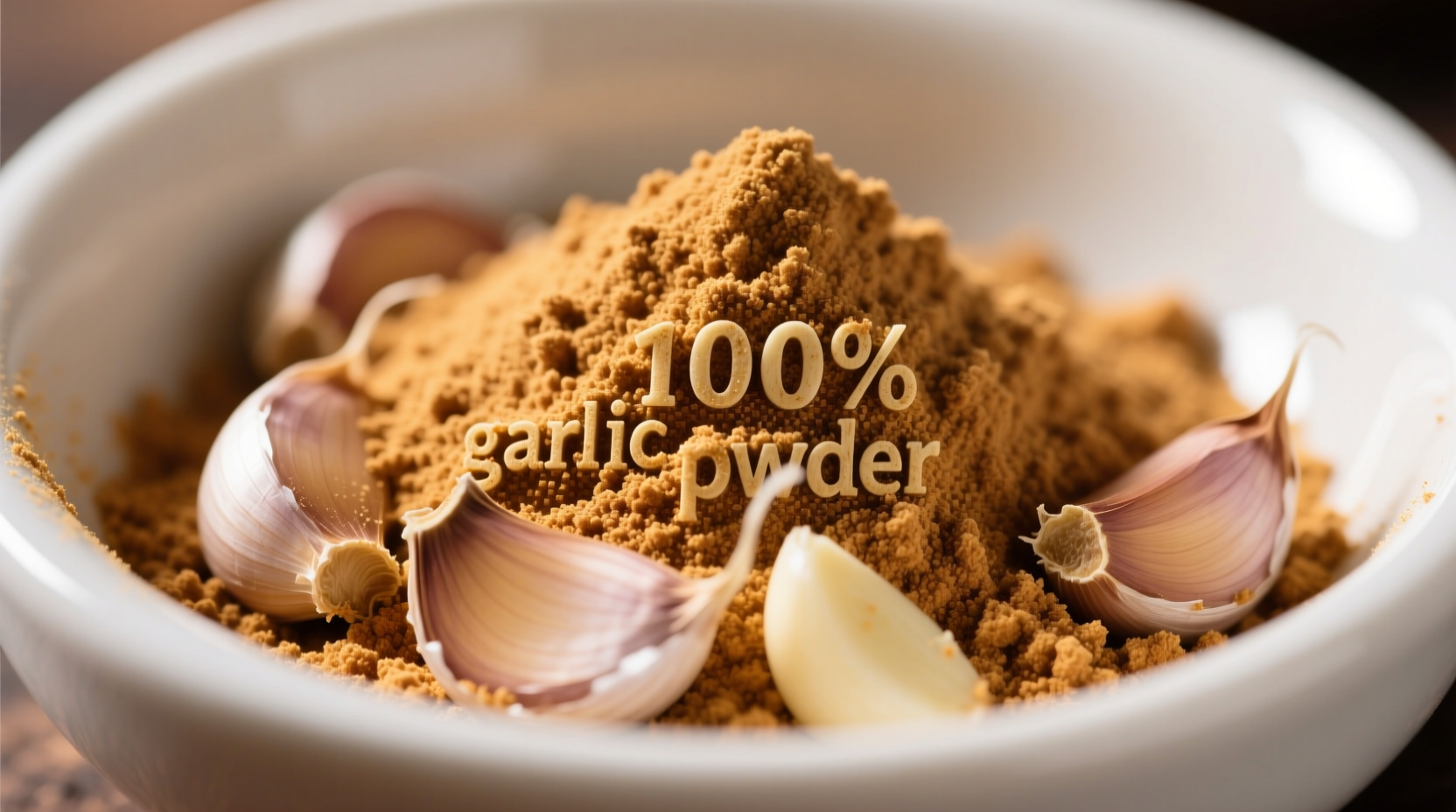Have you ever wondered what's really in that shaker of garlic powder on your spice rack? Understanding exactly what goes into this kitchen staple helps you make informed choices for your cooking and health. Let's explore the simple yet precise process that transforms fresh garlic into its powdered form.
The Basic Production Process of Garlic Powder
Garlic powder starts its journey as fresh garlic bulbs harvested at peak maturity. The production follows a carefully controlled sequence to preserve flavor and nutritional value:
- Selection and cleaning: Only high-quality garlic bulbs are chosen, then thoroughly washed to remove soil and impurities
- Peeling and slicing: Cloves are peeled and sliced to uniform thickness for even drying
- Dehydration: Slices are dried at controlled temperatures (typically 130-150°F) until moisture content drops below 6.5%
- Grinding: Dried garlic is milled to specific particle sizes depending on intended use
- Sifting: Powder passes through precise mesh screens to ensure consistent texture
- Packaging: Immediately sealed in airtight containers to preserve freshness
| Characteristic | Fresh Garlic | Garlic Powder |
|---|---|---|
| Moisture Content | 60-65% | 5-6.5% |
| Shelf Life | 2-3 months | 2-3 years |
| Alliin Content | 1.3-2.2 mg/g | 1.0-1.8 mg/g |
| Flavor Intensity | Mild when raw, complex when cooked | Concentrated, immediate flavor impact |
Commercial vs. Homemade Garlic Powder
While the fundamental process remains the same, there are important distinctions between commercially produced and homemade versions:
Commercial manufacturers follow strict food safety protocols outlined by the FDA Food Labeling Guide. Reputable brands produce pure garlic powder with no additives. However, some lower-quality products may contain anti-caking agents like silicon dioxide (up to 2% by weight) to prevent clumping.
When making garlic powder at home, you have complete control over the process. The National Center for Home Food Preservation recommends slicing garlic cloves no thicker than 1/8 inch and drying at 130-140°F until brittle. Home production eliminates any risk of additives but requires proper storage to maintain quality.
What to Look for on Labels
Reading ingredient labels is crucial when purchasing garlic powder. Pure garlic powder should list only one ingredient: "garlic" or "dehydrated garlic." Be cautious of products containing:
- Anti-caking agents (silicon dioxide, calcium silicate)
- Fillers like cornstarch or maltodextrin
- Artificial flavors or colors
- Salt or other seasonings
The USDA's FoodData Central database confirms that pure garlic powder contains no additional ingredients beyond dehydrated garlic. Products labeled "garlic seasoning" often contain additional ingredients and should not be confused with pure garlic powder.

Practical Usage Considerations
Understanding what garlic powder is made of directly impacts how you use it in cooking. Unlike fresh garlic, powder dissolves completely in liquids, making it ideal for rubs, marinades, and dry mixes. The concentration means you'll need less than fresh garlic—typically 1/8 teaspoon powder equals one fresh clove.
For maximum flavor impact, add garlic powder early in the cooking process to allow time for rehydration. In dry applications like rubs, it bonds well with other spices to create complex flavor profiles without the moisture that fresh garlic introduces.
Storage and Shelf Life
Proper storage maintains the quality of your garlic powder. Keep it in an airtight container away from light, heat, and moisture. The USDA Agricultural Research Service confirms that properly stored garlic powder retains optimal flavor for 2-3 years. Discard if you notice clumping, darkening, or loss of characteristic aroma.











 浙公网安备
33010002000092号
浙公网安备
33010002000092号 浙B2-20120091-4
浙B2-20120091-4